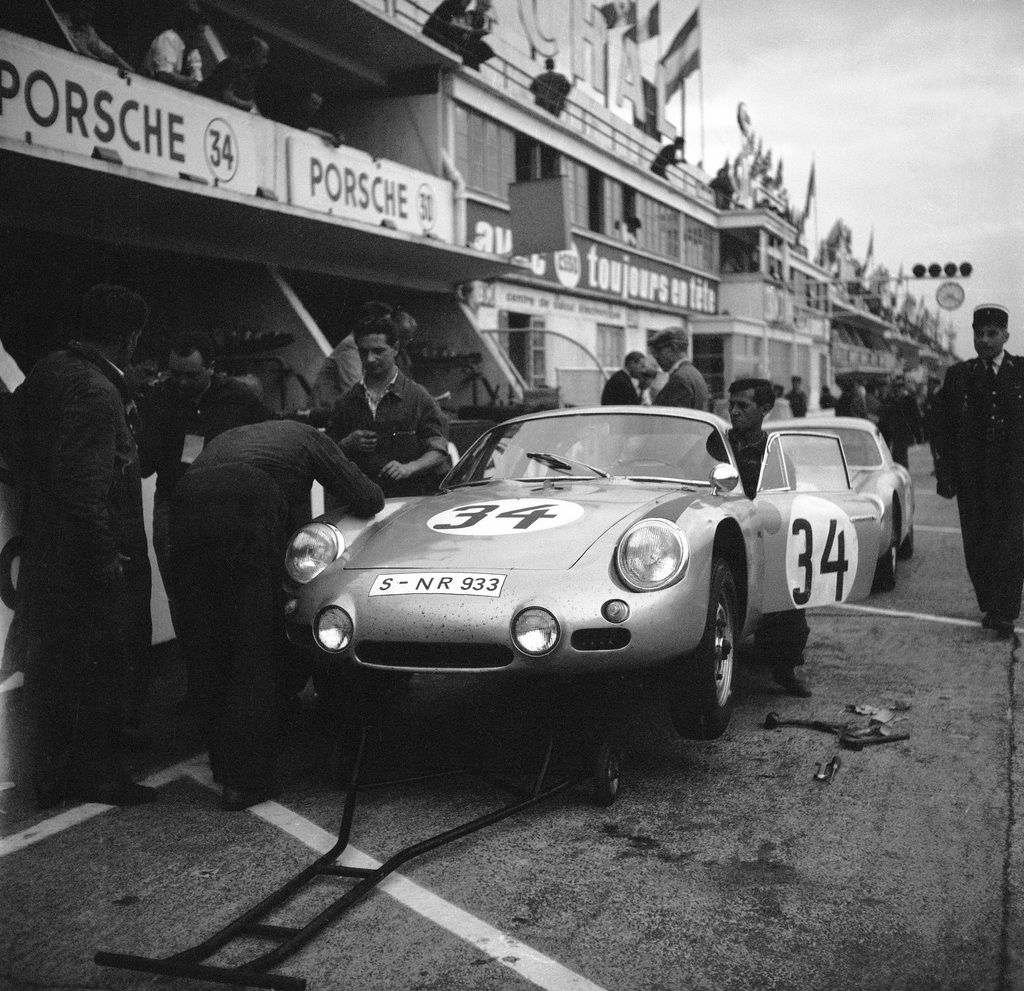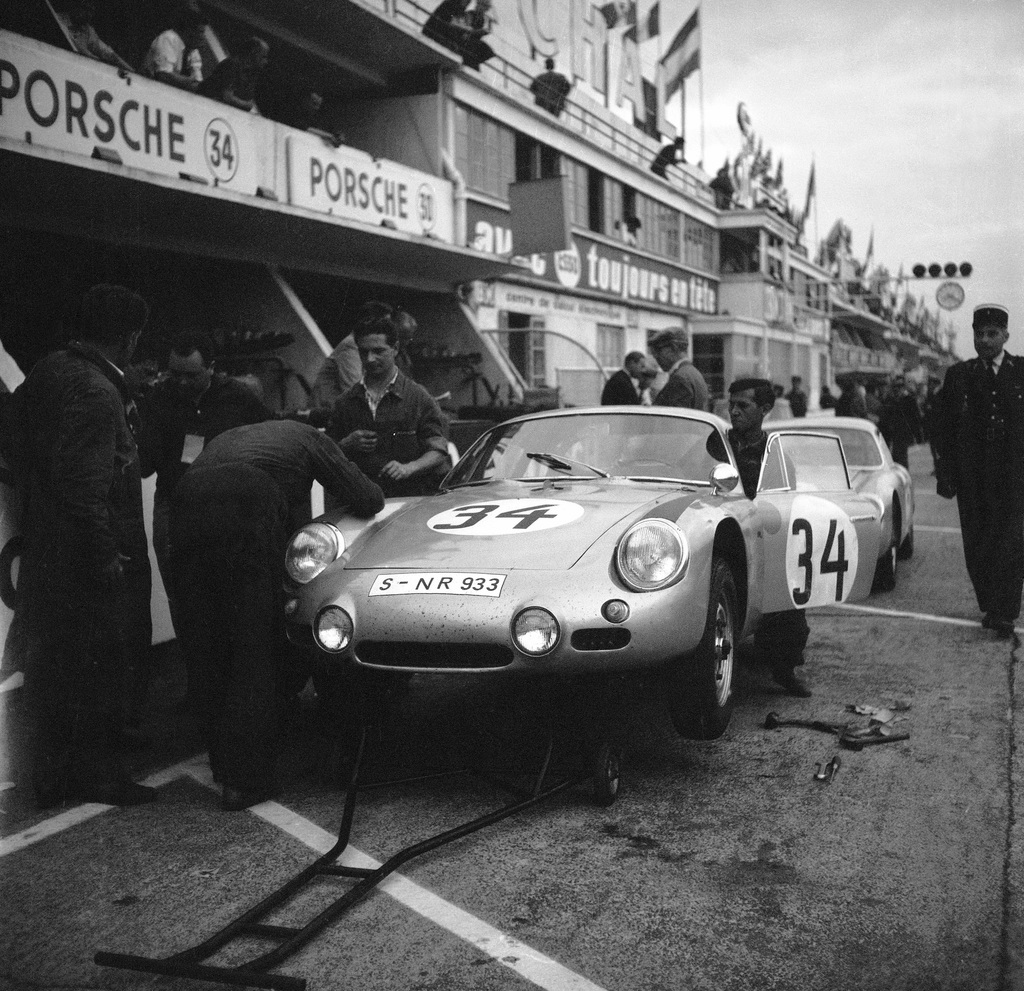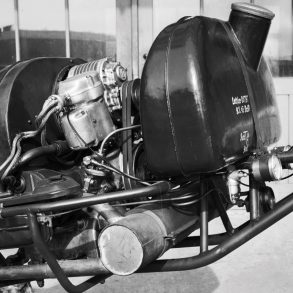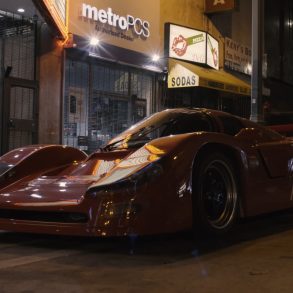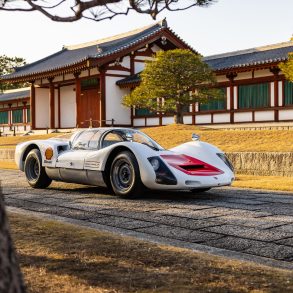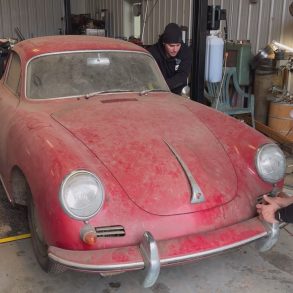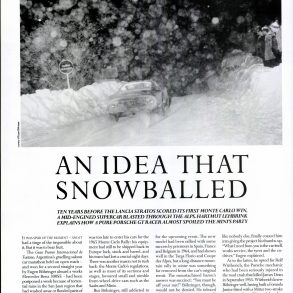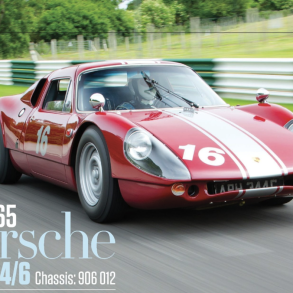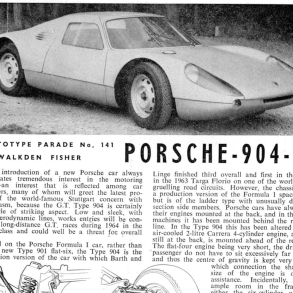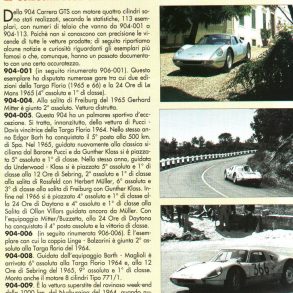1960 – 1961 Porsche Abarth 356B Carrera GTL – Ultimate Guide
In keeping with FIA regulations, Porsche created a new lightweight 356 with help from Abarth. After Porsche had considered numerous Italian companies to manufacture a lightweight 356 body, they settled on Abarth. Franco Scaglione penned the first initial drawings which attempted to reduce frontal area, overall height. Included was an adjustable scoop on the rear deck lid.
Made entirely of aluminum, Abarth’s body was smaller than the Reutter 356 in every dimension and reduced drag from 0.398 Cd to 0.365 Cd. This new body also contributed to considerable weight loss, coming in at 1762 lbs, very near the FIA’s minimum 1780 lbs.
Delivered from Turin, the first prototypes were delivered in February of 1960. They were somewhat rough, but sporting enough to win the Targa Florio. Paul Sträle bought the second prototype and finished the Targa first in class. he would go on to repeat this feat the following year.
Before production began, the rear engine cover was modified with an excess of louvers on both prototypes to avoid hot air reaching the Schubladenmotor’s cooling fan.
Production and Racing
After the first prototypes had been sent to and tested at Zuffenhausen, Porsche committed to 20 orders for the GTL. Carlos Abarth took advantage of the cottage industry in Turin, outsourcing the aluminum bodies to Rocco Motto. The final version sold for 25,000 deutsche marks or $6,500 USD.
There was many detail differences from car to car with regard to body shape, taillights and side windows.
The first production GTLs appeared at at the Nürburgring 1000km alongside the factory’s prototype fitted with experimental disc brakes.
Type 692/3a
In 1961, Porsche introduced a stronger version of their Carrera engine called the 692/3a. It featured wider main bearings to allow higher rpm. The top end was also changed, with more agressive intake camshafts and small flywheels on the end of the camshaft. Carburetor reverted back to Solex units but a larger 44PII-4 unit. This provided about 165 bhp when used with the unmuffled Sebring sports exhaust.
Racing
Following sucess 1960 Targa Florio and Nürburgring 1000km, a sole Porsche GTL appeared at Le Mans The new car could reach 138 mph down the Mulsanne straight. Drivers Linge and Walter finished 10th overall and first in class. The following 1961 and 1962 seasons were contested by both factory and private entrants. Sträle repeated his Targa victory. The factory raced 1013 extensively and won the 1600cc class at the 1962 Sebring 12 hours. Later in the year the same car was joined by 1018, taking class victories at the Nürburgring 1000km and 24 Hours of Le Mans. This pair continued their success in 1963 at the Daytona Continental and Sebring 12 Hours.
Specs & Performance
| type | Racing Car |
| body stylist | Franco Scaglione |
| coachbuilder | Abarth |
| engine | Type 692/3a Air Cooled Flat-4 w/Dry Sump Lubrication |
| position | Rear, Longitudinal |
| aspiration | Natural |
| block material | Aluminum |
| valvetrain | DOHC, 2 Valves per Cyl |
| fuel feed | Solex 44 PII-4 Carburetors |
| displacement | 1582 cc / 96.5 in³ |
| bore | 87.5 mm / 3.4 in |
| stroke | 66 mm / 2.6 in |
| compression | 7.5:1 |
| power | 123.0 kw / 165 bhp @ 7400 rpm |
| specific output | 104.3 bhp per litre |
| body / frame | Aluminum Body over Steel Frame |
| driven wheels | RWD |
| wheel type | Aluminum with Steel Hub |
| top speed | ~231.70 kph / 144 mph |
| 0 – 60 mph | ~8.9 seconds |


